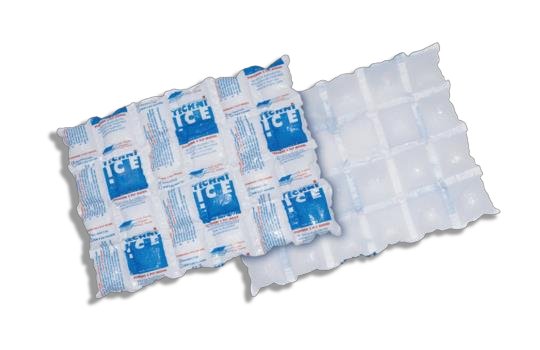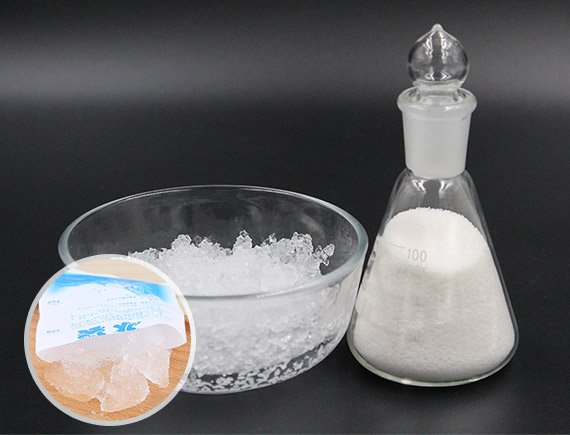Get Free Sample
For cold chain transportation, various types of ice packs are available to help maintain the required temperature for perishable goods. Here are some commonly used ice packs for cold chain logistics:
Gel packs for shipping typically contain a water-based gel that is sealed within a plastic or heavy-duty pouch. The gel is formulated to freeze easily and stay in a solid state for an extended period, providing a reliable and consistent cooling effect. The outer packaging is designed to be durable and leak-resistant to prevent any mess during transportation.
Cost: The cost of gel packs can vary based on factors such as size, composition, and whether they are designed for single-use or multiple uses. While they may be expensive upfront compared to some alternatives, their reusability can make them cost-effective over time.
Phase Change Material (PCM) packs contain materials that undergo a phase transition, changing from one state to another, usually from a solid to a liquid or vice versa.
PCM packs are designed to absorb or release a significant amount of thermal energy during this transition, providing effective temperature control. The most common PCM used is a eutectic mixture, which has a well-defined melting and freezing point.
Composition: PCM packs often contain substances like paraffin, salt hydrates, or other proprietary materials that have a specific melting and freezing point. These materials absorb and release heat during the phase transition.
Cost: PCM packs can be more expensive than traditional gel packs or ice packs, primarily due to the specialized materials used and the technology involved in controlling the phase transition. However, their effectiveness and reusability can contribute to cost savings over time.
Application: PCM packs are commonly used in the pharmaceutical, biotechnology, and food industries where precise temperature control is crucial for transporting sensitive products.
Dry ice is not a traditional ice pack; rather, it is solid carbon dioxide (CO2) in a frozen state.
Composition: Dry ice is composed of pure carbon dioxide in a solid state. It undergoes sublimation, meaning it transitions directly from a solid to a gas without passing through a liquid phase.
Cost: Dry ice can be relatively expensive compared to traditional ice packs due to its low temperature and specialized handling requirements. The cost may also include expenses associated with insulated packaging.

Insulated ice blankets or mats are designed to provide a barrier of insulation along with a cooling element to maintain a desired temperature during transportation.
Composition: These blankets or mats typically consist of layers of insulating material (such as foam or reflective foil) combined with pockets or cells that can hold a cooling element, often a gel or water-based solution.
Cost: The cost of insulated ice blankets or mats can vary based on factors such as size, materials used, and the type of cooling element. They may be more cost-effective than some other specialized cooling solutions.
Reusable refrigerant gel packs typically contain a water-based gel or a gel-like substance that can be frozen and reused multiple times.
Composition: The gel inside these packs is usually a mixture of water and a non-toxic, water-soluble polymer or other materials that remain pliable when frozen.
Cost: While the upfront cost may be slightly higher than single-use options, the reusability of these gel packs can result in long-term cost savings, especially for businesses with regular shipping needs.
Frozen water bottles are a do-it-yourself ice pack option that involves filling standard water bottles with water and freezing them.
Composition: Frozen water bottles contain water in a frozen state. The freezing point of water is 0 degrees Celsius (32 degrees Fahrenheit).
Cost: The cost of using frozen water bottles is generally low, as it involves repurposing water bottles. However, the cost of energy to freeze the water and the impact on the environment should also be considered.
Biodegradable ice packs are designed to break down naturally over time, reducing environmental impact.
Cost: The cost of biodegradable ice packs may be slightly higher than traditional options due to the use of environmentally friendly materials. However, prices can vary depending on the manufacturer and the specific composition of the pack.
Hydrogel ice packs contain a water-based gel that has a high water content, making them effective for temperature control.
Composition: The primary component of hydrogel ice packs is water, combined with a thickening agent and, in some cases, additional additives for improved performance.
Comfortable for Medical Use: Hydrogel ice packs are often used in medical applications due to their flexibility and ability to provide a comfortable cooling sensation. They are commonly used for injuries or post-surgical recovery.
Versatility: Hydrogel ice packs are versatile and find applications in various industries, including medical, pharmaceutical, and food transportation.
Cost: The cost of hydrogel ice packs can vary depending on factors such as size, design, and whether they are intended for single-use or multiple uses. They may be moderately priced compared to some specialized ice packs.
In terms of environmental sustainability, biodegradable ice packs are considered to be more representative of environmentally friendly cold chain solutions. Biodegradable ice packs are designed to break down naturally over time, reducing environmental impact and minimizing the creation of plastic waste. These ice packs often contain materials that break down into environmentally friendly by-products, aligning with sustainability principles and reducing the long-term ecological footprint associated with traditional ice packs.
SOCO® Sodium polyacrylate SNN580H when used in the context of biodegradable ice packs, offers several advantages due to its unique properties.

Biodegradability: Sodium polyacrylate can be formulated with biodegradable materials, contributing to the development of ice packs that break down naturally over time. This is beneficial for reducing environmental impact and minimizing plastic waste.
Water absorption properties: Sodium polyacrylate has excellent water absorption properties. In the early stage of production, the powder can be stored in packs, and water can be added when used to facilitate storage. In the case of an ice pack, it absorbs and retains water or other liquids, forming a gel-like substance that helps maintain a consistent temperature.
Temperature Regulation: Sodium polyacrylate gel packs can assist in regulating temperatures effectively. The controlled release of cold energy makes them suitable for various applications, including medical uses and transportation of temperature-sensitive products.
Non-Toxic Nature: Sodium polyacrylate is generally considered safe and non-toxic, making it suitable for applications where there may be direct contact with skin or food items.
Reusable Options: Some formulations of sodium polyacrylate-based gel packs are designed to be reusable. After use, they can be thawed and refrozen for subsequent applications, enhancing their cost-effectiveness.
Customization: Manufacturers can customize the formulation of sodium polyacrylate gel packs to meet specific requirements, including variations in biodegradability, flexibility, and temperature regulation.
We have “Ask The Expert” online service 24/7. If you have any questions please contact us.